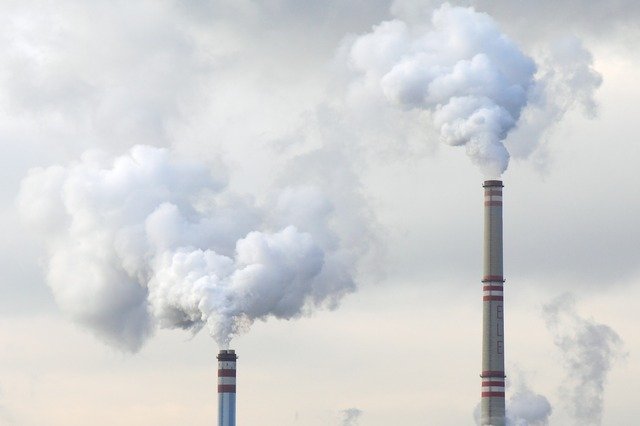
Climate Change and Engineering
The Role of Environmental Engineers in the Fight Against Air Pollution
Read a summary using the INOMICS AI tool
Air pollution is increasing at a rapid rate across the world, wreaking havoc with the environment and the health of humans. In fact, every year an estimated 4.2 million people die globally every year as a result of exposure to outdoor air pollution, according to the World Health Organization (WHO). The rapid increase in pollution can, in part, be attributed to the swift economic development enjoyed in many areas across the globe. At present, nearly 80% of the world’s urban population is believed to live in cities that have unacceptable levels of air pollution. While there are many contributors to the poor air quality, engineering and manufacturing concerns are at the top of the list. Thankfully, there are a group of professionals within the engineering sector, known as environmental engineers, who not only identify pollutants but design systems to contain them as well.

The unsung heroes of our environment and health
During the course of 2018, the UN Intergovernmental Panel on Climate Change warned that all coal-fired electricity must be eradicated by 2050. This is our only chance of limiting global warming increases to 1.5 degrees Celsius. If this cannot be achieved, the world can expect to experience a devastating climate crisis. As many as one million lives can be saved every year through the reduction of air pollution if the goals of the Paris Agreement to counter climate change can be met. The top 15 countries that contribute to greenhouse gas emissions spend an average of 4% of their GDP on air pollution-related healthcare. Apart from the environmental benefit, a substantial economic benefit can also be enjoyed if the goal is met. Although it won’t be an easy feat to achieve, environmental engineering efforts can make the target considerably easier to reach.
Suggested Opportunities
- Conferenza
- Posted 4 days ago
45th RSEP International Multidisciplinary Conference
Between 4 Feb and 5 Feb in Lisbon, Portogallo
- Professional Training Course
- (Online)
- Posted 6 days ago
Data Science for Economics Course
Starts 17 Feb at Barcelona School of Economics in Barcelona, Spagna
Careful analysis leads to greater understanding
When a new manufacturing concern is being built, a team of environmental engineers will be tasked with identifying the various compounds utilized in the production process. The pollutants that will be generated will also be determined. While such an in-depth analysis may seem inconsequential, it is a vital step towards the containment of pollutants. After the analysis has been concluded, a range of statistical models can be created that link fuels and contaminants to levels of air pollution.
Find solutions to key issues
The role of an environmental engineer is not only to identify common air pollutants, but also to design and enforce effectual solutions. There are a number of control mechanisms that can be utilized to reduce the amount of pollutants emitted by a manufacturing plant. Recommending the installation of air pollution equipment such as thermal oxidizers can prove to be very beneficial. These oxidizers are capable of destroying high-volume Volatile Organic Compounds (VOCs) and Hazardous Air Pollutants (HAPs) that are created during a variety of industrial exhaust streams and chemical processes. Other measures to consider include complex ventilation systems and baghouses that can be used at steel mills and pharmaceutical companies.
Enforcing compliance is an essential task
Environmental engineers can work in both the private and public sectors. Those employed in the latter may find themselves responsible for ensuring that certain rules and regulations are adhered to. This includes compliance with the Cross-State Air Pollution Rule in the USA. Some of the common industry-related activities that environmental engineers may be tasked with include reviewing installation permit applications and the assessment of atmospheric emissions in relation to the laws of a country, state or city. Environmental engineers operating in the private sector may find themselves performing similar tasks while also establishing whether their employers are compliant in terms of legally-binding rules and regulations.
It’s all in a day’s work
When environmental engineers are involved in the designing of facilities and processes that address pollution, they typically aim to kill several birds with one stone. They address various issues, ranging from environmental protection to employee safety, simultaneously. They must also be able to ascertain any potential losses to their employer and mitigate them accordingly. Very often, environmental engineers have to design pollution detection and reduction systems that seamlessly form part of an existing system. They will also be required, almost on a daily basis, to predict how their designs will fit in with operations as a whole, including workers, machinery, and the general environment.
Engineering developments driving construction material innovation
Environmental engineering, and air pollution engineering in particular, has resulted in the development of a range of innovative construction materials that can be utilized across a range of industries. During the course of 2018, it was reported that builders and construction engineers in both Milan and Mexico City were making use of a revolutionary technology that allowed them to construct buildings that effectually reduce smog. A Berlin-based firm was credited with designing tiles that can turn smog into water and other eco-friendly substances. The Manuel Gea Gonzalez Hospital in Mexico City was fitted with the tiles in a bid to reduce the substantial amount of smog and pollution in the city.
Global engineering efforts for a cleaner future
Engineers from across the globe are focusing their efforts on developing technologies that can reduce air pollution and improve human and environmental health. Engineers in Israel developed a pioneering application entitled BreezoMeter which has now gained popularity all across the world. The app offers personalized air quality as well as pollen-related data and fire alerts. Coverage is worldwide and data is accurate all the way down to street level. BreezoMeter utilizes the power of big data and can pinpoint sources of extensive air pollution. Over in Beijing, China, projects such as the Smog-Free Tower is aiming to decrease air pollution in the country which sees more than 1.6 million people dying every year due to pollution-related illnesses. The tower sucks 30,000 m3/hr of air pollution and compresses the residue which is then, somewhat surprisingly, molded into jewelry items such as rings and cufflinks.
Environmental engineering is a valuable career path
Environmental engineering positions are set to increase by an average of 12% by 2024 according to the U.S. Bureau of Labor Statistics. Individuals who are looking to embark on a career as an air quality engineer need to be in possession of a Bachelor’s degree with a strong focus on engineering, maths, and science. A Master’s degree will undoubtedly provide a prospective engineer with more in-depth knowledge as well as a decent amount of practical experience which will be of great benefit during their career.
-
- Programma di Dottorato
- Posted 11 months ago
PhD Programme in Economics (with optional M.Sc. Economic Research)
Starts 1 Oct at University of Cologne and Universität zu Köln, WiSo-Fakultät and Cologne Graduate School in Management, Economics and Social Sciences in Köln, Germania -
- Programma di Dottorato
- Posted 9 months ago
9 PhD Positions in the Research Training Group 2865 “CUDE”
Starts 1 Oct at University of Bielefeld in Bielefeld, Germania -
- Professor Job
- Posted 1 week ago
Professor of Economics, Tenured - Tenure/Track (Open-Rank)
At New York University Abu Dhabi in Emirati Arabi Uniti










